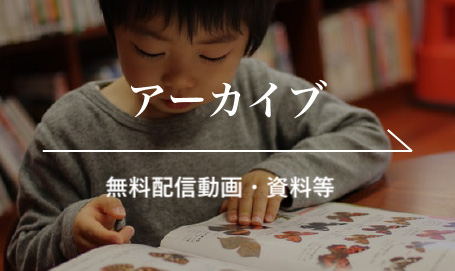< VOLUME 50, No.3 >
Takei Hitoshi. Technological Research on Soil Material as Material Environment to Expand the Play with Soil in Early Childhood.
Research on Early Childhood Care and Education in Japan, 2012, 50(3), 242-251.
Play with the soil in the early childhood is one of the especially important activities in the human formation. This research aimed to obtain the strategy of the environmental reform by obtaining objective material concerning the soil environment of kindergarten and day nursery based on a technological analysis technique by laser analysis and Scanning Electron Microscope. The clarification through this research is to be included the clay element and the silt element in the soil environment to which infant’s play is activated. In addition, the thing that infant’s play is activated by using the clayey soil exhausted from the river plant was shown as for the soil environment.
Keywords: play with the soil, a technological analysis technique, clay element, silt clement
—————–
Ishikura Takako. Study on a Yard Environment Necessary for the Growth of Infants : The Relationship between Tools and Natural Materials which Enable Expression.
Research on Early Childhood Care and Education in Japan, 2012, 50(3), 252-262.
In this study, I clarified what tools and the place that enables children’s expression in their play with natural materials in a yard. Also, focusing on a relationship between natural materials and tools, I examined expressions produced there. In play with water, sand, dirt, snow, and ice, where they tended to use tools, I found that characteristics of natural materials and tools sometimes determine an infants’ expression. I tended to find expressions of “run”, “accumulate”, and “connect” in play with water, “put in”, “accumulate” and “mix” in play with sand and dirt, “put in”, “ram down” and “put on” in play with snow and ice. I described the necessity of grasping the tendency of tools necessary for each play and organizing an environment.
Keywords: infant, yard environment, natural material, play, tool
—————–
Yamada Emi. The Educational Environment Supporting Children’s Activities in Kindergarten : Effects of Location and Setting of the Library Center of Kindergarten Classroom on Children’s Reading Styles.
Research on Early Childhood Care and Education in Japan, 2012, 50(3), 263-275.
This study examined the relation between the setting up of the library center of the kindergarten classroom and the children’s reading styles of picture books. About the location, the flexible space allowing children sitting side by side or gathering around, as well as the table large enough for two children to read books side by side are needed. As children shared books in a varied style with peers, we should set up library center supporting these reading styles. About the display of books, placing picture books with its cover front is efficient to catch the interest of children especially who were not familiar with the library center.
Keywords: educational environment, learning center setting, library center, sharing books, way of displaying picture books
—————–
Kameyama Hideo. A Study on the Meaning of Growing Rice in Kindergarten : The Classification by the KJ-Method Focusing on Teacher’s Observation Records.
Research on Early Childhood Care and Education in Japan, 2012, 50(3), 276-286.
This study examines the pedagogical significance of involving kindergarten children in the process of growing rice. Observation records of 91 five-year-old children from 3 cohorts of 2 kindergartens were analyzed in this study. 90 episodes were selected from 4,451 teacher observations and were analyzed using the KJ method. The results revealed five main categories : “the opportunity to experience planting, growing, and harvesting of rice”, “awareness of the changes and growth of rice”, “awareness of using farming tools”, “awareness of the characteristics of rice straw” and “enjoyment of tasting one’s own harvested rice”. The following meanings were pointed out : 1 ) promoting various emotional experiences, 2 ) evoking various awareness of growing rice, and 3 ) linking their experience to children’s lives. Also, other practical challenges were discussed in this study.
Keywords: five-year-old children, growing rice, teacher’s observation records, KJ method
—————–
Matsumoto Hiroo, Matsui Gota, Nishiu Hiromi. The Childcare Environment to Support the Cooperative Experience for Young Children : With a Focus on the Roles of Object.
Research on Early Childhood Care and Education in Japan, 2012, 50(3), 287-297.
The purpose of this study was to clarify the roles and functions of “object in early childhood setting” to support the cooperative experience among children. We analyzed a class of three-year-olds and four-year-olds in a kindergarten attached to a Kagawa University. As a result, the following two points showed. First, characteristic of objects may restrict the cooperative experience of children. If children always imagine a fixed pattern from the toy, it is difficult for them to investigate and create in that cooperative play. Second, we confirmed the process of cooperative experience in a class of three-year-olds and four-year-olds. However, there are some differences in the functions of the object between the two. Therefore, the teacher needs to consider its roles and functions to facilitate the cooperative experience among children.
Keywords: cooperative experience, roles and functions of object, early childhood
—————–
Shiomi Toshiyuki, Murakami Hirofumi, Matsunaga Shizuko, Hosaka Yoshikazu, Shimura Yoko. Modified “Young Infants ‘Behavior and Nursery Worker ‘Conscious” through a Space Design in Nursery Room.
Research on Early Childhood Care and Education in Japan, 2012, 50(3), 298-308.
This study examines the influences of space design of the nursery room to “early infants’s behavior and nursery workers thought” by action research method. Space design of the nursery room was modified two times within a year by nursery workers and we observed the changes which occured in the 0-year class’s children’s behavior. As a result we found two facts. One, children became more steady, concentrated, and continued according to modification of space design of the nursery room. Second, nursery workers came to recognize the influence of the environment’s power. We came to the conclusion that quality of nursery room environment is important to “quality of nursery”.
Keywords: day care for under three, design of environment, space, behavior analysis, nursery worker’s thought
—————–
Sakai Aiichiro. What Place is Terrace as “the Boundary” for Young Children?.
Research on Early Childhood Care and Education in Japan, 2012, 50(3), 309-319.
The purpose of this study is to clarify how young children use a terrace as “the boundary” and to examine what types of relationships exist between neighboring places and activities. In this study, case study information was obtained by observing and qualitatively analyzing the behavior of kindergarten children. As a result, it was determined that the children used the terrace as “the boundary” as the following six usages : the kindergarten doorway, the adjacent indoor space, the adjacent outdoor space, the play space, the relaxation space, and the activity postponement space. Additionally, it became clear that these six usages were related to each other and surrounding areas of a terrace by the character of the terrace of “junction of kindergarten life” and “ambiguity”.
Keywords: kindergarten environment, environment composition, terrace as “the boundary”, junction of kindergarten life, ambiguity
—————–









